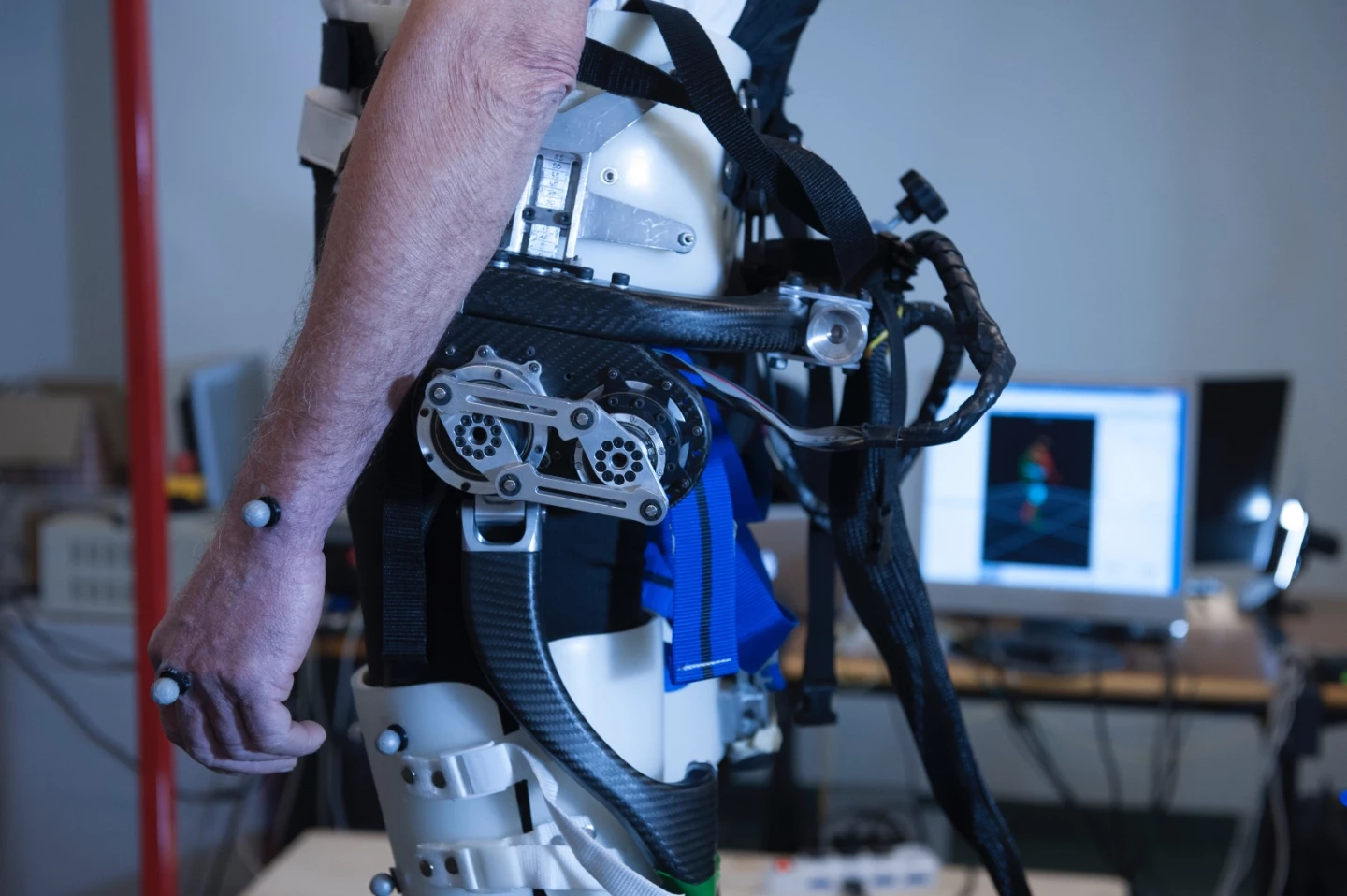Most exoskeleton technology is focused on either giving soldiers or workers superhero-like strength and endurance for carrying heavy equipment, or offering those with serious mobility issues the chance to walk again. But a new exoskeleton system isn't designed to get people back on their feet, but to keep them there – it's intended to prevent the elderly from taking a tumble.
Falls among the elderly are a major problem that is only increasing as our population ages. An international team of scientists from Scuola Sant'Anna in Italy and EPFL (Ecole polytechnique fédérale de Lausanne) in Switzerland have engineered a clever solution in the form of an exoskeleton that can counteract the loss of balance often experienced by senior citizens. It can also help wearers regain their balance after an accidental slip.
The device is wearable from the waist down, with carbon fiber braces and motors at the hip. The system initially takes a few minutes to learn the particulars of its wearer's gait, and once calibrated its algorithm can identify any deviations from the normal stride that would indicate the onset of a fall. If the wearer loses balance, the motors push downwards on the thighs to regain stability at the hip.
"I feel more confident when I wear the exoskeleton," says 69 year-old Fulvio Bertelli, recruited to test the prototype system after walking on a treadmill designed to cause a loss of balance.

While this first device bears all the hallmarks of a classic prototype – bulky, overly mechanical and mildly impractical looking – the team has established that the technology does indeed work and the algorithms that sense when a wearer could be about to fall are effective. Future iterations of the device are set to be more discrete and appropriate for public use.
"This work paves the way for imagining a completely new generation of exoskeletons that will actually be effective outside of research laboratories thanks to their ability to augment users' movement and make their mobility more stable and safe," says Professor Nicola Vitiello from Scuola Sant'Anna.
The team published their results in the journal Scientific Reports.
Take a look at the exoskeleton in action in the video below.
Source: EPFL










